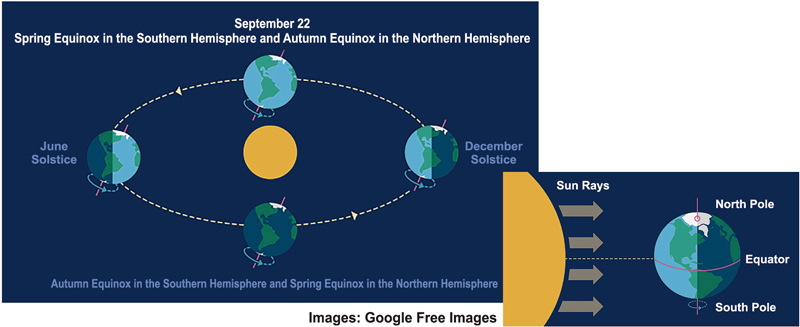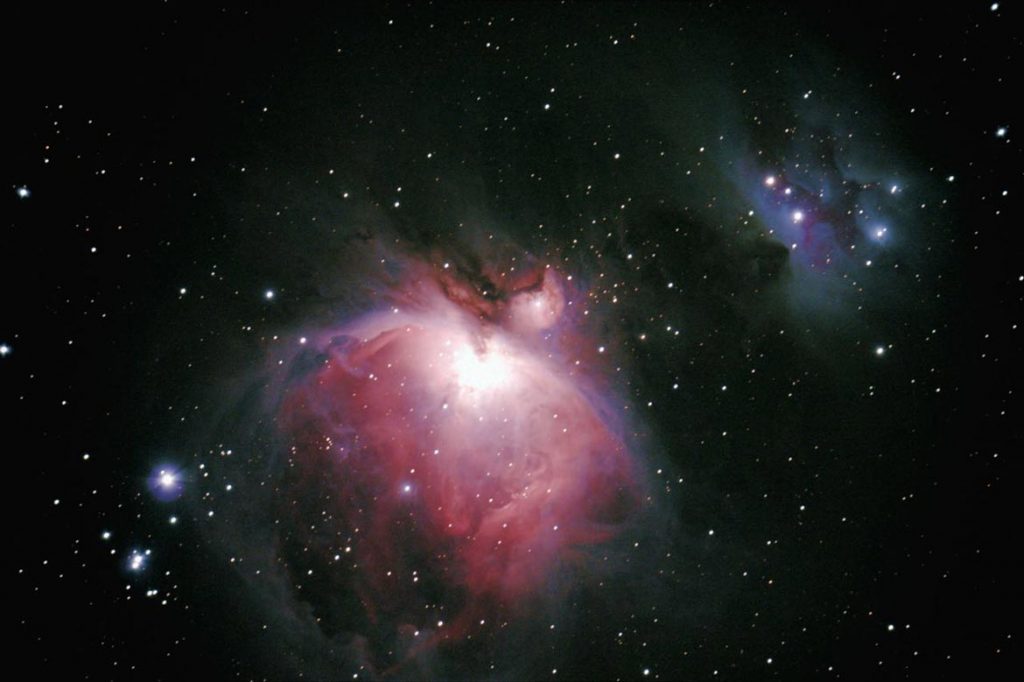Astronomical Ephemeris – September, 2022
Astronomical Ephemeris – September, 2022


North and South. Fall and spring. End and beginning of cycle. September arrives and brings with it the equinox, a phenomenon that marks the change of season. It is nature that transforms the landscape around the world and provides subtleties that can (why not?) inspire us to transform ourselves. This is the highlight of September’s astronomical events.
The change in seasons will occur on September 22, when the Northern Hemisphere will pass through the Autumnal Equinox and the Southern Hemisphere through the Spring Equinox. The event occurs because the Earth, in its movement around its own axis (rotation) and also around the sun (translation), is located at points where the sun’s rays fall perpendicular to the equator. In this way, the Northern and Southern Hemispheres are equally lit – unlike the rest of the year. To observe the phenomenon, just appreciate the sunrise, which will occur exactly in the geographic east, and the sunset, precisely in the geographic west.
The name ‘equinox’ derives from the Latin aequus (equal) and nox (night). On this day, nature balances itself with approximately equal hours of light and darkness, that is, days and nights of practically the same length. It is at this point of equality that dual seasons originate: autumn, characterized by the dry leaves that fall and the fruits that are harvested; and spring, with the germination of seeds. Wouldn’t human beings go through this same process in the cycle of their lives?

Other astronomical events observable to the naked eye around the world
September 8 – Conjunction between the Moon and Saturn
Observable in the direction of the geographic west, in the constellation of Capricorn, during the early morning.
September 11 – Conjunction of the Moon and Jupiter
Observable in the direction of the geographic west, in the constellation of Pisces, during the early morning.
September 17 – Conjunction between the Moon and Mars
Observable in the direction of the geographic east, in the constellation of Taurus, during the early morning, and with the star Aldebaran located a little above.
September 26 – Jupiter in opposition (to the Sun)
Jupiter can be observed at maximum brightness throughout the night, towards the geographic northeast, in the constellation of Pisces.
Learn more
Term used in Astronomy that designates the moment when a planet or other celestial object is in a position opposite the Sun, when observed from the Earth; that is, when the Earth is between the Sun and the celestial object forming an alignment of 180º.
The best time to observe a celestial object outside the Earth’s orbit is when it is in an “opposition” position.
The phenomenon called “conjunction” occurs when the observer here on Earth has the apparent view that two or more celestial bodies are very close. This proximity between the celestial bodies that our eyes perceive, without the help of equipment, is not real, they are actually very far from each other.
September 3 – First Quarter
September 10 – Full Moon
September 17 – Last Quarter
September 25 – New Moon
Sources: jpl.nasa.gov/calendar / solarsystem.nasa.gov / in-the-sky.org / Stellarium.org / earthsky.org / ov.ufrj.br / planetary ephemeris – Jet Propulsion Laboratory (JPL) / jpl. nasa.gov / canaltch.com.br / rmg.co.uk / wikipidia.com

The astronomical ephemeris are a monthly schedule prepared by the Astronomy Sector, which is one of the 12 that make up the PRÓ-VIDA Laboratory Department. In the department, studies, research and scientific experiments related to various topics are developed, as well as field activities and lectures.

The astronomical ephemeris are a monthly schedule prepared by the Astronomy Sector, which is one of the 12 that make up the PRÓ-VIDA Laboratory Department. In the department, studies, research and scientific experiments related to various topics are developed, as well as field activities and lectures.







